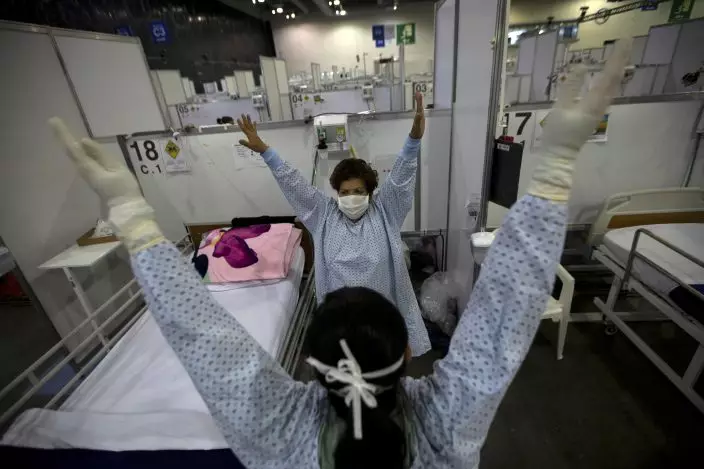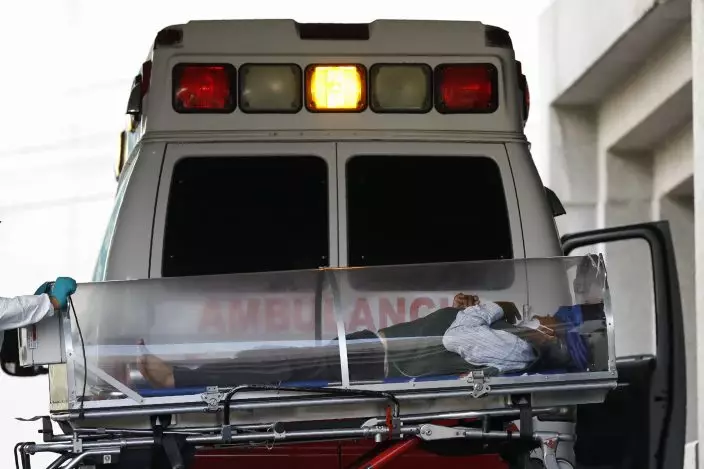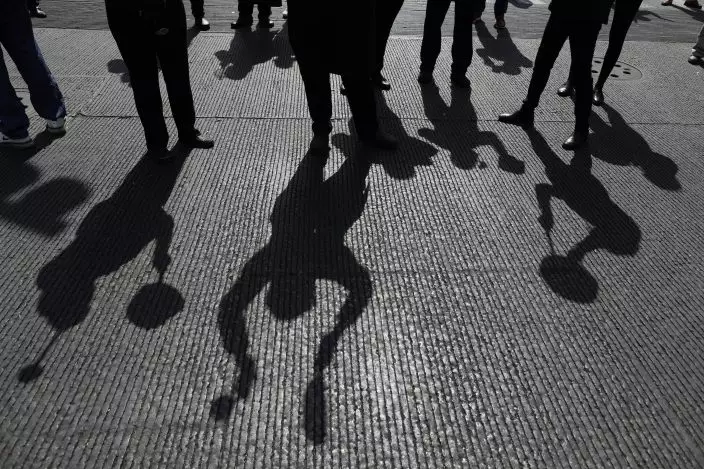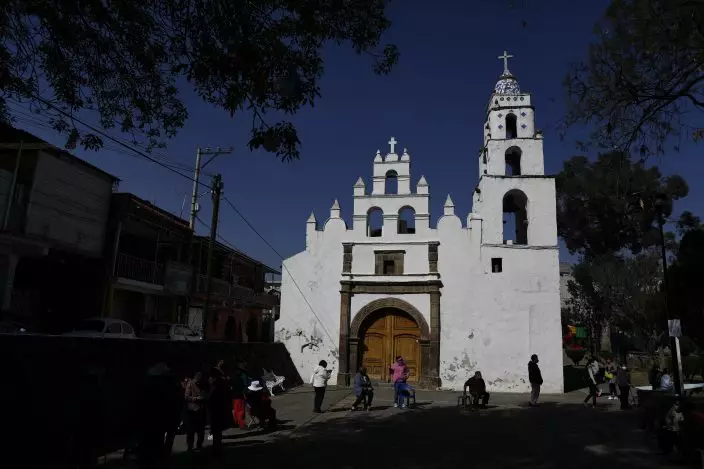More than three months after COVID-19 infections peaked in Mexico City, the local government announced Friday that the public hospital network dedicated to fighting the disease is experiencing its lowest rate occupancy of the pandemic.
One year after the country instituted a color-coded alert system for the pandemic, the capital for the first time moved from orange to yellow, another step down from the top category, red.
City officials placed occupancy rate in public hospitals dedicated to COVID-19 care at 16%, a welcome change from January, when a surge following the holiday season pushed some hospitals to their limits.

FILE - In this March 11, 2021 file photo, directed by a nurse, a COVID-19 patient, back center, stretches her arms as part of a fitness program in a field hospital built inside the Citibanamex convention center in Mexico City. Mexico City's government announced on Friday, May 7, 2021 that public hospitals dedicated to fighting COVID-19 is experiencing its lowest rate occupancy of the pandemic and the city is slightly easing some restrictions, more than three months after COVID-19 infections peaked in the Mexican capital. (AP PhotoFernando Llano, File)
Mayor Claudia Sheinbaum said there was no scientific certainty to say why Mexico City finds it in much better place, but she listed a half dozen possible factors including greater discipline by citizens, expanded testing, a vaccination campaign, improved weather and the fact that many people in the city have already been infected.
Sheinbaum said 84% of the capital’s senior citizens have been vaccinated and the campaign recently moved to the 50 to 59 age group.
The practical changes in the lowering of the alert level are minimal. Among them, the limits on capacity at businesses and movie theaters will increase somewhat, but remain below 50%.

FILE - In this Jan. 10, 2021 file photo, a patient is moved from an ambulance into the COVID-19 treatment center at Dr. Carlos MacGregor Sanchez General Hospital in Mexico City. Mexico City's government announced on Friday, May 7, 2021 that public hospitals dedicated to fighting COVID-19 are experiencing their lowest rate occupancy of the pandemic and the city is slightly easing some restrictions, more than three months after infections peaked in the Mexican capital in January. (AP PhotoRebecca Blackwell, File)
There have been more than 42,000 test-confirmed COVID-19 deaths in the city of 9 million, though due to the limited availability of testing the real number is believed to be much higher.

FILE - In this April 21, 2021, a coronavirus piñata sits in storage at Victor Ochoa's workshop in Mexico City. Ochoa says that sales of piñatas at his workshop have decreased by 90% because of the restrictions used to control the spread of COVID-19. Mexico City's government announced on Friday, May 7, 2021 that public hospitals dedicated to fighting COVID-19 are experiencing their lowest rate occupancy of the pandemic and the city is slightly easing some restrictions, more than three months after infections peaked in the Mexican capital in January. (AP PhotoMarco Ugarte, File)

FILE - In this Jan. 12, 2021 file photo, the shadows of restaurant workers banging metal pots are cast on the street as more than a hundred employees from multiple restaurants block an intersection in the Polanco neighborhood to protest COVID-19 "red alert" restrictions that have closed on-site dining in Mexico City. Mexico City's government announced on Friday, May 7, 2021 that public hospitals dedicated to fighting COVID-19 is experiencing its lowest rate occupancy of the pandemic and the city is slightly easing some restrictions, more than three months after COVID-19 infections peaked in the Mexican capital. (AP PhotoRebecca Blackwell, File)

FILE - In this Feb. 15, 2021 file photo, people over age 60 wait in an hours-long line to get the AstraZeneca vaccine, on the day Mexico begins vaccinating its elderly population against COVID-19, outside a health center in the outlying Milpa Alta borough of Mexico City. Mexico City's government announced on Friday, May 7, 2021 that public hospitals dedicated to fighting COVID-19 are experiencing their lowest rate occupancy of the pandemic and the city is slightly easing some restrictions, more than three months after infections peaked in the Mexican capital in January. (AP PhotoRebecca Blackwell, File)


